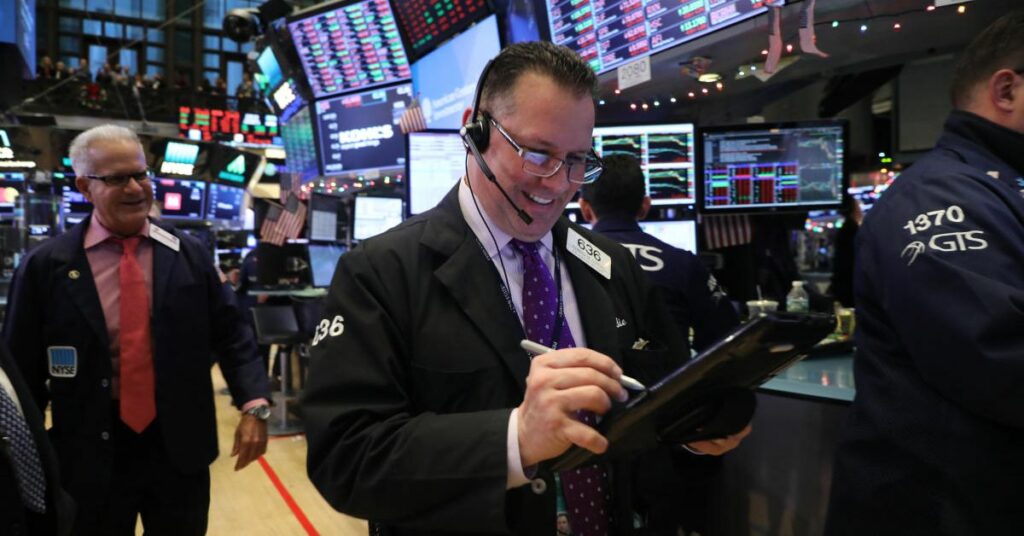Wednesday, U.S. stock futures went up a little bit as Wall Street tried to get back on track after a rough month of trading. Futures for the S&P 500 (GSPC) and the Dow Jones Industrial Average (DJI) both went up by 0.3% and 0.2%, respectively. The technology-heavy Nasdaq Composite (IXIC) saw its contracts go up by 0.4%.
According to Andrew Tyler, head of the US Market Intelligence team at JP Morgan, the push upward occurred early on Wednesday morning after better-than-expected industrial and services activity showed China’s “rapid near-term rebound” in February. This was said by Tyler.
On Wednesday morning, the yield on the benchmark 10-year U.S. Treasury note reached 3.93% after an overnight increase. The price of a barrel of crude oil moved down, with the U.S. standard WTI falling to $76.30. Wall Street is anticipating the release of manufacturing statistics on Wednesday morning, which will provide additional insight into the effects of monetary policy tightening and is part of the economic data that is being tracked.
On Tuesday, stocks experienced a decline, bringing to a close what has been a turbulent month of February on Wall Street. Tuesday afternoon, the trading desk at JP Morgan stated that the month-end rebalance that occurred in February was the cause of some weakness in the equity markets and strength in the bond markets. In addition, Goldman Sachs (GS) had its stock price drop by 3.8% during its investor day, which comes at a time when the bank is weighing its available options regarding its underperforming consumer platforms business.
JPM financial sector specialist James Goulbourne wrote in a note on Tuesday
“After the recent strategic missteps, this update is clearly more evolution than revolution,” “with profitability in the ancillary Platform Solutions business, rather than deeper expense cuts in core business (what the market really wanted), combined with declining balance sheet exposure expected to drive returns higher.”
According to data provided by Bespoke Investment Group, the S&P 500 index has now gained 3.4% so far this year, with February now in the rearview mirror. Mega-cap stocks have been a significant force behind the index’s recent movement. Having said that, the majority of the gains in the S&P 500 have been driven by just 20 of the top stocks in the index.
According to Bespoke Investment Group’s research, the S&P 500 has historically seen its gains in the second half of the month in March. Now that the calendar has turned, this trend is expected to continue.
Investors continue to be focused on the course of the rate hikes that will be implemented by the Federal Reserve. Austan Goolsbee, the President of the Chicago Federal Reserve, delivered his first public speech since taking office a month ago on Tuesday. In that speech, he said that it would be “dangerous and a mistake for policy makers to rely too heavily on market reactions.” He also emphasized how important it is to “supplement these traditional data with observations on the ground from the real economy.”
Goolsbee, who will be a voting member at this year’s meeting of the Federal Open Market Committee that will determine monetary policy, did not make any comments on the subject, though.
The Federal Reserve has made significant rate hikes over the past year in an effort to bring inflation under control. Inflation, though, continues to be stubborn. Following the meeting that took place on March 21-22, the policymakers at the central bank will issue new projections.
The electric truck manufacturer Rivian (RIVN) issued guidance for fiscal 2023 deliveries that was 20% lower than estimates. This was due to the fact that the company is having trouble scaling up its production of trucks, vans, and SUVs. In single stock moves, shares of RIVN fell on Wednesday morning.
Nio (NIO), a Chinese luxury EV startup, revealed a significantly worse-than-expected loss for the fourth quarter as margins took a blow due in part to the “losses on purchase agreements.” Nio is yet another electric vehicle manufacturer that has provided poor guidance for sales. During premarket trading, the stock experienced only a modest decrease.
The vaccine manufacturer Novavax (NVAX) issued a statement on Wednesday morning that cast doubt on the company’s capacity to continue operating during the course of the following year. This comes at a time when the company has been having difficulty developing the COVID-19 vaccine and breaking into the market for it.
Following the announcement of the company’s quarterly earnings, shares of Alibaba (BABA) rose in premarket trading. This increase was aided by a 4% increase in the Hang Seng index that occurred overnight.
The PC and printing giant HP (HPQ) reported mixed results on Wednesday morning, which led to an increase in the stock price of HP (HPQ). These data were released in the midst of a weak demand environment for personal computers. The sales for the fiscal quarter were down 18% year-over-year. In comparison to the previous year, sales of printers were down 5%.
Other companies that will be reporting their profits on Wednesday include Wendy’s, Dollar Tree (DLTR), Kohl’s (KSS), and Salesforce (CRM) (WEN).
If you enjoyed reading this post, please share your feedback with us in the comments box below. In addition, don’t forget to check back on our website Journalist PR frequently for the most recent updates.

